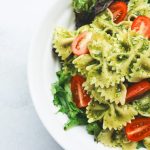In the ever-changing world of beverages, manufacturers constantly seek innovative ways to appeal to consumers’ evolving palates and lifestyle choices. One trending category is alcohol-free drinks. While the United Kingdom’s alcohol market continues to thrive, a growing number of consumers are opting for low alcohol or alcohol-free alternatives. This article explores the strategies that alcohol-free beverage brands in the UK can use to broaden their market reach and increase their share in the beverage industry.
Understanding the Alcohol-Free Beverage Market
Before diving into the strategies for market expansion, it is imperative to understand the alcohol-free beverages market. The latest reports indicate a significant surge in the sales of these products, driven largely by health-conscious consumers. Rising awareness about the potential health risks associated with alcohol consumption is resulting in a shift in consumer preference towards healthier options.
Lire également : What Are the Latest Consumer Trends for Ethical Fashion in the UK?
This new wave of "mindful drinking" is not merely a fleeting fad. According to a recent market research report, the global non-alcoholic beverage market is projected to grow at a compound annual growth rate of approximately 4.7% between 2022 and 2027. This growth is partly attributed to the increasing product launches of alcohol-free drinks by prominent brands.
It’s worth noting that this trend is not confined to the soft drinks sector. The alcohol-free beer, wine, and spirits categories are also experiencing growth. This presents diverse opportunities for brands to tap into.
A lire également : What Strategies Can UK-Based Charities Implement to Increase Online Donations?
Recognising The Driving Factors for Low-Alcohol Drinks
To successfully expand their market reach, alcohol-free beverage brands need to identify the factors driving consumers towards their products. With the rise of health and wellness trends, many consumers are reducing or eliminating their alcohol intake.
In fact, a significant portion of the market share is held by young adults, who reportedly perceive excessive alcohol consumption as uncool. Instead, they are exploring low-alcohol or alcohol-free options that align with their health and wellness goals.
Moreover, the rise in alcohol taxation and stricter drunk-driving regulations have pushed some consumers to explore alcohol-free options. Understanding these key drivers will allow brands to formulate effective marketing strategies to attract and retain their target consumers.
Capitalising on Health and Wellness Trends
One of the most effective ways for brands to increase their market share is by capitalising on existing trends. The health and wellness trend is currently dominating the beverages market, and alcohol-free brands are perfectly positioned to leverage this.
Brands should focus on marketing their products as healthier alternatives to alcoholic drinks. Highlighting the low-calorie, sugar-free, or natural ingredients in their products could appeal to health-conscious consumers.
Furthermore, aligning their brand with workout regimes, detox plans, or mindfulness practices could create a strong brand association with health and wellness. Product branding and packaging that reflect these themes can help in attracting health-focused consumers.
Leveraging Innovative Marketing Techniques
In the digital age, innovative marketing techniques can significantly help in expanding market reach. Brands that successfully harness social media platforms, influencer marketing, and other digital marketing strategies can increase their product visibility and appeal to a larger audience.
By telling compelling stories about their products, brands can engage with their consumers on an emotional level. This can involve sharing the journey of their brand, the benefits of their product, or the experiences of other consumers.
Additionally, the use of influencers who resonate with the brand’s target audience can be an efficient way to drive product awareness and sales.
Creating Collaborations and Partnerships
Lastly, collaborations and partnerships can offer an effective way for brands to enter new markets or strengthen their position within existing ones. This could involve partnering with like-minded brands, events, or individuals who can help increase their product visibility and appeal to a broader audience.
For instance, collaborations with fitness brands or health-focused events can provide an opportunity to showcase their products to a group of potential consumers. Similarly, partnerships with major retailers or hospitality venues can allow brands to reach a wider audience.
In conclusion, the rising trend of alcohol-free beverages presents a significant opportunity for brands in the UK to expand their market. By understanding the market dynamics, capitalising on prevailing trends, leveraging innovative marketing techniques, and creating collaborations, alcohol-free beverage brands can successfully broaden their reach and increase their market share.
Capitalising on the Nolo Drinks Segment
One of the fastest-growing segments within the alcohol-free beverages market is the so-called ‘nolo’ drinks – products that have no or low alcohol content. This category has gained remarkable popularity, particularly among millennials and Gen-Z consumers. With the trend of ‘mindful drinking’ on the rise, nolo drinks provide an appealing alternative to traditional alcoholic beverages.
The nolo drinks segment represents a promising avenue for market expansion. As per industry reports, this category has seen double-digit growth in recent years and is expected to continue its upward trajectory. This is due in part to the increasing public awareness of the health risks associated with alcohol consumption, as well as the growing demand for healthier lifestyle choices.
Brands can capitalise on this trend by launching their own nolo drinks or by rebranding and refocusing their existing products to appeal to this demographic. This could involve highlighting the low alcohol content, promoting the natural ingredients used, or marketing the products as a sophisticated alternative to alcoholic drinks.
Moreover, collaborations with popular bars and restaurants can also prove beneficial. These establishments are increasingly incorporating nolo options into their menus to cater to the changing consumer preferences. Therefore, partnerships with such businesses can provide brands with a wider platform to showcase their products and engage with potential consumers.
Expanding Distribution Through Convenience Stores
Another effective strategy for expanding market reach involves enhancing distribution through convenience stores. One of the key factors driving the sales of alcohol-free beverages is their easy availability. As more consumers opt for these products, there is an increasing demand for these items to be readily available in local convenience stores.
Convenience stores, with their wide network and high footfall, offer an excellent platform for brands to reach a larger audience. Moreover, these stores often serve as a first point of contact for consumers interested in trying new products. Ensuring that alcohol-free beverages are prominently displayed and well-stocked in these stores can significantly increase their visibility and, consequently, their market share.
Brands can also partner with convenience store chains to run promotional campaigns or offer discounts on their products. This could potentially drive up sales and encourage trial among new consumers.
Another potential opportunity lies in the bottled water segment. With consumers becoming increasingly conscious about their hydration needs, there is a growing demand for flavoured and fortified bottled water. Brands could consider exploring this segment, perhaps by launching their own line of non-alcoholic, flavoured water products.
Conclusion
In the ever-evolving beverages market, alcohol-free brands in the United Kingdom have a unique opportunity to expand their market reach and increase their share. By understanding the dynamics of the alcohol-free drinks market and recognising the factors driving its growth, brands can formulate effective strategies for expansion.
Capitalising on the nolo drinks segment, leveraging the health and wellness trends, using innovative marketing techniques, and enhancing distribution through convenience stores are all potential avenues for growth. Moreover, collaborations and partnerships can provide a further boost, helping brands penetrate new markets and reach a broader audience.
As the shift towards healthier lifestyle choices continues, the demand for low alcohol and alcohol-free drinks is set to grow. Brands that can successfully tap into this trend and meet the evolving consumer demands stand to gain significantly, both in terms of market share and brand reputation.












